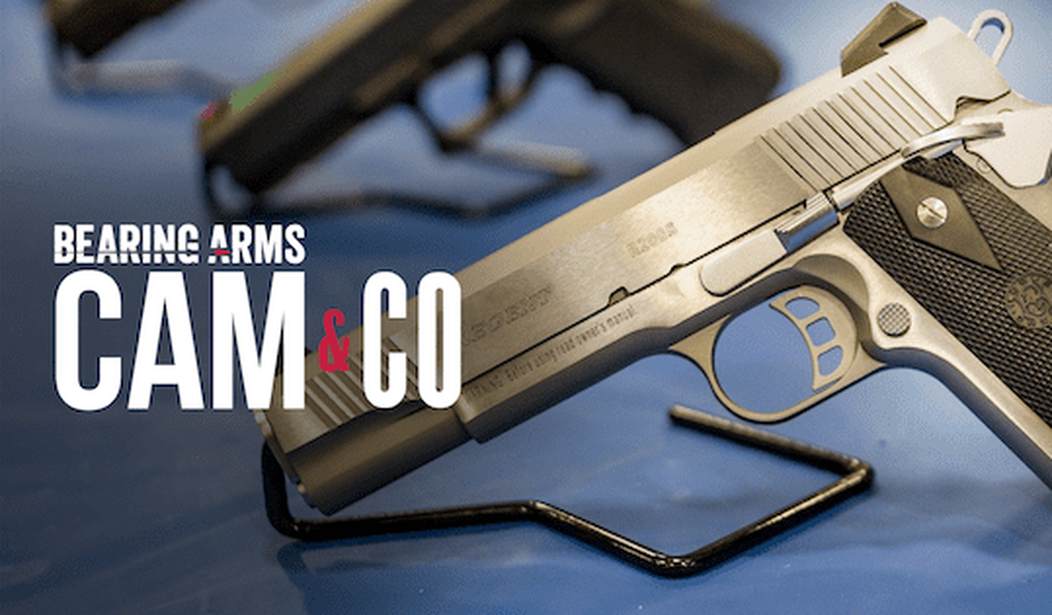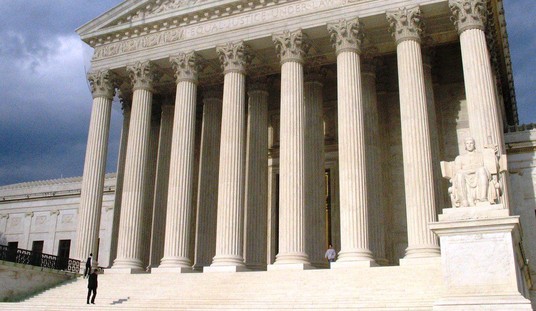Sandra Richardson knows first-hand how screwed up New York’s SAFE Act is when it comes to gun ownership and mental health. The longtime RN and public health researcher joined me on today’s Bearing Arms’ Cam & Co to talk not only about her experience with having her gun taken from her after talking to a mental health professional, but the impact that the law is having in keeping gun owners away from treatment while failing to address or help those who truly are at risk of harming themselves or others.
Richardson’s story begins during the chaotic days of the COVID pandemic, when she was working as a research scientist for the New York Department of Health. As Richardson described, the long hours combined with other stressors in her life led to her reaching out to talk to a mental health professional.
“I trusted them. There was my first mistake,” Richardson told me. “Because there is, I’ve discovered, an inherent bias that I was very naive to. So, I was open to say ‘yeah, I own guns, and it’s a great part of my life. It’s where family gets together. We go hunting together, we go target shooting together. It’s sharing, it’s a good space in my life, it’s not a negative.'”
The healthcare professional that Richardson spoke to, on the other hand, apparently believed that the combination of life stress and gun ownership meant that Richardson posed a threat to herself, and five weeks after meeting with them Richardson got a phone call from her local sheriff informing her that she’d been reported to authorities under the SAFE Act’s Mental Hygiene Law 9.46, which:
requires four groups of mental health professionals (i.e., physicians, psychologists, registered nurses, and licensed clinical social workers), in the exercise of their reasonable professional judgment, to make a report as soon as practicable to county mental health officials if an individual for whom they are providing mental health treatment is “likely to engage in conduct that will cause serious harm to self or others.”
Upon receiving a Section 9.46 report, if the county mental health official agrees with the mental health professional’s determination, he or she will then report “non-clinical identifying information” to the New York State Division of Criminal Justice Services (DCJS). DCJS will then determine whether the person possesses a firearms license and, if so, will notify the appropriate local licensing official, who must suspend or revoke the license as soon as practicable. The person must surrender such license and all firearms, rifles, or shotguns to the licensing officer, but if the license and weapons are not surrendered, police and certain peace officers are authorized to remove all such weapons.
In Richardson’s case, she was originally instructed to not only turn over all of her own licensed firearms, but those registered to her husband as well. Richardson had to hire an attorney and go to court to fight the report, which would have barred her from lawfully possessing a firearm for a period of five years. Thankfully a judge quickly saw that Richardson posed no threat to herself or others and ordered her gun returned to her, but it took several exhausting months and a sizeable amount of legal fees to make that happen.
Richardson knew that if she’d been the victim of a false report there must be others out there with similar stories, and after retiring from the state Health Department earlier this year she got to work digging into whatever data she could find. Last month she published her first round of research, and what she found is staggering.
For each DCJS database search related to such reports, about 12 adults who received mental health services in the past year are less likely to seek mental health care; and about 16 adult gun owners are less likely to seek mental health care because of this law. This reporting captures approximately 2.7% of individuals who are suicidal or homicidal. These results indicate that NY’s SAFE Act reporting has created a large barrier to mental health care and is ineffective in capturing its target population.
Beyond the obvious constitutional concerns with the SAFE Act’s Mental Hygiene law, which has even fewer due process protections than the state’s “red flag” statute, Richardson’s research indicates that the reporting requirement is keeping many gun owners from talking to a counselor, therapist, psychologist, or psychiatrist about depression, anxiety, or other mental health issues because they’re concerned about going through the same ordeal that Richardson was subjected to. At the same time, those individuals who truly are experiencing and expressing suicidal or homicidal ideation may not get the help they need, and the state is slow to respond. It took five weeks for the county sheriff to reach out to Richardson despite the reporting standard’s “need for immediate action”.
Even worse, as Richardson describes, those individuals who are reported to authorities who don’t possess a handgun permit will never be notified at all that the state has stripped them of their right to keep and bear arms unless they attempt to purchase a gun or (starting tomorrow) ammunition in the state. As Richardson says, “for these people there is no appeal process and no due process of law … individuals who are reported are not permitted to see the report against them.”
According to her research, just 1% of reports end up with gun owners being notified by county officials, meaning the vast majority of those reported under the SAFE Act’s Mental Hygiene Law are completely unaware and unable to respond. But that’s far from the only problem with the SAFE Act statute, as Richardson documented.
There are many MHL § 9.46 reports filed each year and assuming these reports are accurate, they only capture a small percentage of the target population while deterring a larger number of people from seeking mental health care. . . Although at first glance one may think the number of reports represents harm reduction, this is not necessarily the case. These reports are filed without an independent second opinion, sometimes by reporters not authorized to diagnose SI or HI, and based on DCJS data 99% of reported people have no opportunity to challenge the report. . . It is important to note that among the 1% of reported individuals who are ordered to court, there have been instances where the MHL § 9.46 report was not upheld . . . , but the number overturned is unknown.
. . . [T]his reporting while potentially benefiting a smaller number, is increasing the risk of harm to hundreds of thousands of people every year. Simply put, MHL § 9.46 reporting has created a large barrier to mental health care. . . . [The ratio] most closely aligned to the population . . . is that for every 1 DCJS database search there are 12 individuals who received mental health care in the past year who are less likely to seek mental health care because of this law. . . . The ratio for gun owners shows that for every 1 DCJS database search there are 16 guns owners who are less likely to seek mental health care due to this law. However, this is likely an underestimate because the [estimate] was based on a study of both gun owners and non-gun owners already seeking mental health care. [T]his law is written to target legal gun ownership which may make gun owners far more reluctant to seek care.
. . . Among the provider types required to report, some are not authorized to make medical diagnoses or to admit a person for observation or inpatient care which would be an immediate need if the reporting standard were met . . . It seems then that a more appropriate course of action for those reporters would be to refer to a higher-level care provider so that proper diagnosis and care is rendered in a timely manner . . . It follows that there is an obligation to observe or admit for care if the reporting standard is met. . . . [I]t is very unlikely that a person would be discharged to the community if SI or HI presented an imminent risk . . . Therefore, this reporting is unlikely to prevent imminent harm.
Reporting by providers who are not authorized to diagnose SI or HI and who cannot provide the appropriate immediate care needed, sharing of private information without consent that may not meet the reporting standard or be required by law, lack of an independent second opinion, lack of provider accountability, delayed or lack of notification about reporting, and no due process of law undermines [sic] patient trust in mental health care providers. This is an unfortunate paradox because it is common knowledge that trust is the basis of an effective therapeutic relationship in mental health care.
The inherent issues with the law are abundant, from the lack of transparency for those subject to a report to the fact that medical professionals who aren’t authorized to make medical diagnoses are doing so on a regular basis and depriving individuals of their constitutional rights in the process.
In Richardson’s opinion, there’s no amount of tweaking that can fix this mess. Instead, she believes the entire statute needs to be repealed and replaced with something that’s truly meant to improve access to mental health instead of being used to take guns away from their lawful owners.
I can’t thank Sandra Richardson enough for joining me on today’s show and sharing her own personal story as well as the results of her initial research. Richardson says she’s just getting started in shining a light on the unsafe practices mandated by the SAFE Act, and I’m looking forward to welcoming her back to Cam & Co to continue the conversation in the near future.









Join the conversation as a VIP Member